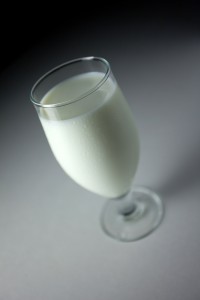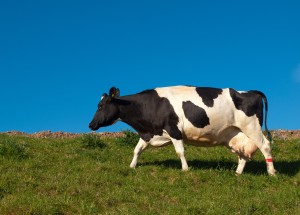Raw Milk 101
There is a lot of controversy surrounding Raw Milk, and I am passionate about discussing this topic with you!
Pasteurized Milk versus Raw Milk
The pasteurization process is when the milk is heated to 150 degrees for at least a half hour and then reducing the temperature. This process accomplishes two things; First, it kills the bacteria and nutrients out of the milk, and secondly, it transforms the physical structure of the milk protein to prevent the milk from souring.
The pasteurization process destroys good bacteria and digestive enzymes. Because the important nutrients are gone, companies fortify their milk with vitamins and minerals.
Another effect of the pasteurization process, is that the milk’s natural sugar, called lactose, turns into beta-lactose. Ever heard of “lactose intolerance”? Someone who is lactose intolerant is unable to digest the beta-lactose found in milk products. Interestingly enough, someone who is lactose intolerant is able to drink raw milk without any adverse effects.
I have personally read about this “theory” for years, but I wanted to find out for myself whether this was actually true. I had my husband, who is lactose intolerant, drink a cup of raw milk. He was admittedly nervous about a possible reaction, but drank the raw milk anyways. To his surprise, he had no issue with drinking the raw milk! The next day, he had another cup of raw milk. Still no problems! The reason he had no issues is because the natural digestive enzymes in raw milk weren’t heated out of the milk, and he was able to digest it just fine.
Raw Milk for consumption comes from grass fed cows (no grains) that are not given any hormones of any kind. The milk from these cows do not go through pasteurization or homogenization processes, and all of the beneficial bacteria, enzymes, amino acids, and vitamins are present.
Is Raw Milk Safe?
Almost any food source poses a possible risk of getting someone sick, so there is a possibility of becoming sick from drinking contaminated raw milk. Fortunately, the risk of getting sick from raw milk is very small. Let me explain the two types of raw milk to understand the risk.
The dairy cows used to produce the pasteurized milk sold in the United States are fed grains, given hormones, and are raised in very unsanitary conditions. These conditions affect the cow’s health and the quality of their milk. These factory farming conditions are the reasons why the milk has to be pasteurized in the first place. If this milk wasn’t pasteurized, it wouldn’t be safe to drink.
Organic farms that allow their cows to roam freely and eat grass (which is much healthier for them), they produce milk that is safe to drink without the pasteurization process. In addition to this, the milk coming from these cows must meet or exceed pasteurized milk standards without ever pasteurizing the milk.
The FDA is trying to ban raw milk, saying that it is unsafe for consumption, yet their is no evidence to back this claim up. I have heard about more salmonella outbreaks coming from peanut butter than I ever have from raw milk.
Here is an excerpt from the Weston A. Price Foundation website, which further explains my point:
Except for a brief hiatus in 1990, raw milk has always been for sale commercially in California, usually in health food stores, although I can remember a period when it was even sold in grocery stores. Millions of people consumed commercial raw milk during that period and although the health department kept an eagle eye open for any possible evidence of harm, not a single incidence was reported. During the same period, there were many instances of contamination in pasteurized milk, some of which resulted in death.
Why Raw Milk is Illegal in some states
Public health officials have warned consumers that raw milk poses the risk of transmitting bacteria, such as salmonella. Their concern has given them their rationalization for pasteurizing the milk. The pasteurization process extends the milk’s shelf life, making it much more profitable for the dairy industry.
As more consumers are realizing the benefits of raw milk over pasteurized, one would think the dairy industry would follow suit and meet the new demands. Unfortunately, because of the conditions of their farms, they simply cannot produce raw milk that would be safe for consumption. They would have to have more land for their cows to roam freely. They would have to allow the cows to develop naturally rather than giving them growth hormones to speed up the process of milk production. The factory farms would have to make a lot of changes. They rely a lot on the pasteurization process, since it allows them to produce more milk in less amount of time, which means more money.
It all comes down to this: The reason for the ban is based on profit rather than safety.
Campaign for Real (Raw) Milk
Protect your right to choose raw dairy! You can help by joining the Raw Milk Campaign, which is a project created by the Weston A. Price Foundation.
If you would like to benefit from raw milk, you can find raw milk that is from healthy and clean cows that are grass fed.
Everyday you are voting. How? You vote with your pocket book.
Feel free to follow us, however you like: Google+, Facebook, Twitter, Pinterest


You’re quite wrong about a number of things.
Pasteurized milk retains most of the enzymes and nutrients. People with lactose intolerance have no tolerance to raw milk. That has been proven scientifically.
Raw milk is also much more risky than pasteurized. Many more people get sick from raw milk, even though much fewer folks drink raw milk. Raw milk sellers listed on Weston A. Price’s website have been the cause of many serious illnesses and outbreaks and have been caught with high levels of antibiotics in their milk.
http://www.realrawmilkfacts.com/
Hi Guest, Thank you for your comment!
Pasteurized milk does have enzymes and nutrients, since they have been fortified with them after the pasteurization process.
Those with lactose intolerance can drink raw milk, since the digestive enzymes are still available in the milk. Like I mentioned in the article, my husband is lactose intolerant and I had him drink a glass (about 8oz) of raw milk. He had no lactose problems. None! He would not have been able to do this with regular milk. Even a little bit of cheese is usually a problem for him. I don’t always trust other people’s tests or opinions. I trust the little experiments I try out for myself. : )
Raw milk CAN be risky…that’s why you have to make sure you are getting your milk for a good source (grass fed, clean environment, cows meant do provide raw milk to consumers, etc). As I mentioned in the article, the requirements for raw milk have to meet or exceed the same standards as pasteurized milk. I personally get my raw milk from a LEGAL source, which means it has to meet (or exceed) those standards.
I was raised on raw milk from a neighboring dairy farm in Western Pennsylvania until I was 10. So were my 5 brothers & sisters. I am now 46. I am neither overweight nor do I have any kind of health problems at all. We drank a gallon of raw milk a day. The state came into the farms & would not let them give us milk anymore because they forced pasteurization. It is already scientifically proven that Salmonella does not live in raw milk after 24 hours. It dies. It is already proven that raw milk enzymes kill bacteria. Furthermore, there has never been a proven case where raw milk has caused devastating diseases or death. Yes, maybe cow feces or flies fall into the milk vats, but THAT is what causes the disease. NOT the raw milk. Perhaps America needs to develop a way to clean out the bacteria in milk WITHOUT killing the much needed enzymes. Ever thought of that? The benefits of raw milk outweight the slight chance of salmonella – so, you get sick for 24 hours – but remember, Salmonella doesn’t live in raw milk after 24 hours. Pasteurization is a money scam as it is a cheap way to greedily obtain money from a product & you don’t ever get fresh milk in the grocery anyhow – it’s all over 24 hours old. Perhaps, in this day and age of technology, raw milk could be TESTED for BACTERIA – and THEN sold when it shows none or little amounts – instead of killing the goodness by pasteurization. But then, you would end up with BUNCHES of healthy people like me – no illnesses or disease – surely the government wouldn’t want that as it would really kill the economy – and the pharmaceutical companies from billions of dollars of profiteering from all you sick people out there who have been scared straight from drinking raw milk.